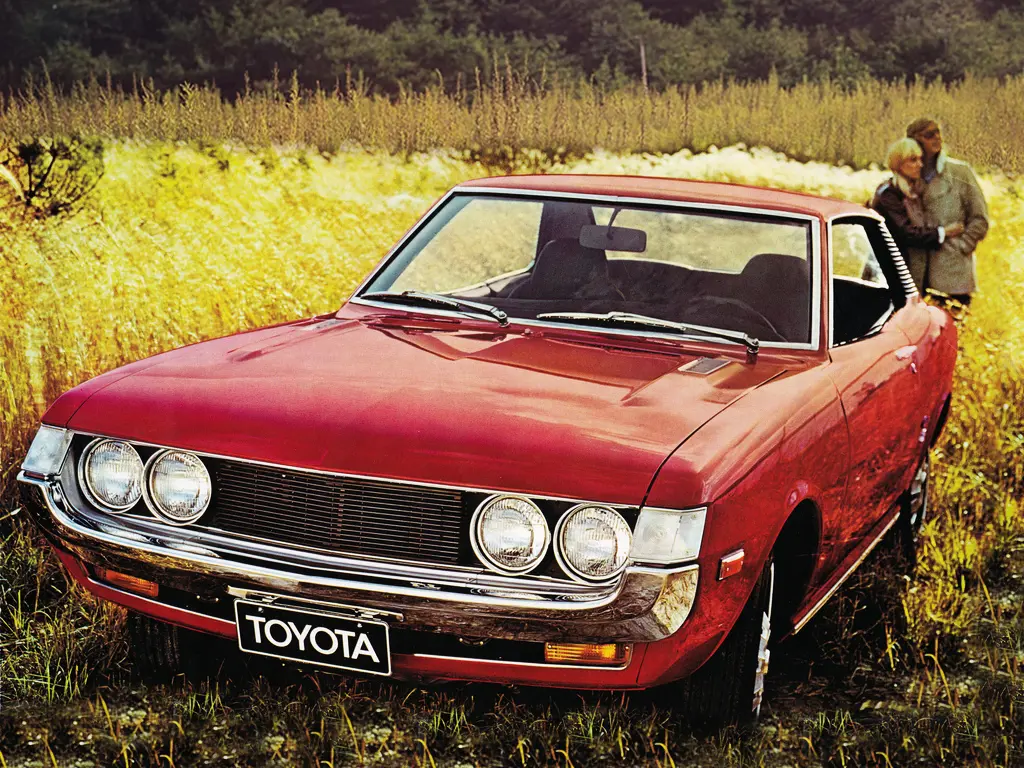THE ORIGINAL TOYOTA CELICA; A CELEBRATION
03 December 2021
One of the many highlights of this year’s Lancaster Insurance Classic Motor Show was the opportunity to marvel at the first-generation Celica. In the early seventies, the Toyota appeared to stand apart from the offered Ford Capri Mk. I, Sunbeam Rapier, Vauxhall Firenza or MGB GT, a scaled-down Mustang for a very reasonable price. And that was precisely its raison d’être.
Development work on the Celica commenced in 1967. It debuted at the 1970 Tokyo Motor Show, where it was apparent to most observers that Toyota devised it with overseas sales in mind. The extremely attractive lines bore no resemblance to its Carina parent model, while the technical specification included all-independent suspension and front disc brakes. In short, the Celica looked set to succeed in both home and US export markets.

Meanwhile, across the Atlantic, the first UK versions arrived in early 1971. The Celica allowed dealers to offer a genuine Capri/Opel Mantas rival, as the previous Corona Mk. II 1900 ‘Hardtop’ was never a common sight in this country. Japanese customers could choose from a vast range of engines, but the four-cylinder 1,588cc unit was most familiar to British motorists.
Autocar tested the 1600ST in late 1971 and found it had “No Rival At The Price”. At £1,361.88, the Celica offered a sense of quasi American glamour on an East Cheam budget, and the report concluded it was “a well made and exceptionally well-equipped sports coupe that will do a lot for the Toyota image in this country”. Its top speed of 105 mph made the Carina 9 mph faster than a Capri 1600 GT XLR, although the Ford was £64 cheaper.
Motor also found the Toyota ideal “to impress the neighbours with”, while “The performance and economy are in unrivalled by those of the other cars in the group”; the Capri 2000 GT, the Manta 1.6S, the Firenza 2000 and the Morris Marina 1.8TC. Furthermore, its gear change and equipment were “outstanding” and its handling and road holding “more than respectable”.
All of which must have been music to the ears of Toyota GB. They proudly announced that the Ove Andersson/Geriant Phillips Celica had won Class 5 in the RAC International Rally. in the following year .Such news tempted even diehards who refused to “buy Japanese”, and who regarded any car with a heater as standard as representing the end of known civilisation
The Liftback, which resembled a scaled-down ’Muscle Car’ made its bow in 1973. The UK market 2000ST employed the Carina’s 1,968cc engine to compensate for the extra weight of the new bodywork. In September 1976, Autocar stated it was “a very sensible, economical sports coupe, and probably one of the nicest mid-range cars to come from Japan”. They also complimented Toyota on suppressing “the more vulgar excesses” of the stylists, although many owners revelled in the Celica’s Pan Pacific glamour.
By August of 1977, production commenced of the second generation A40/ A50 series. The surviving numbers of the original models are now very limited, which is another reason why it was such a pleasure to see the pioneering Celicas at the NEC. As the advertisements promised, “You might go out for a sports car and come back with a Toyota”.
